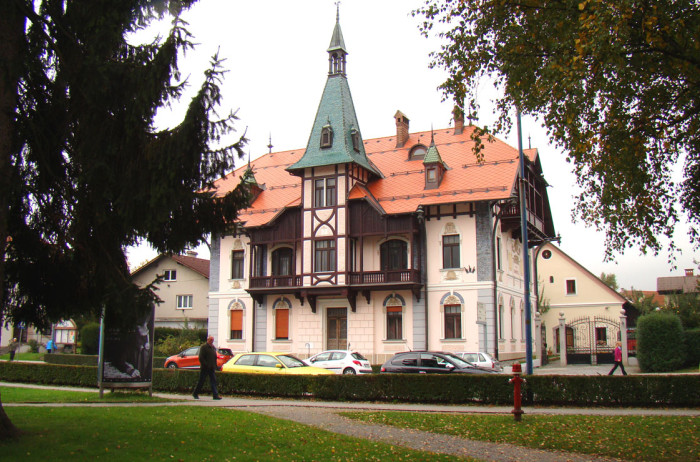Top 10 Spots You Shouldn’t Miss in Ljubljana If You Love Architecture
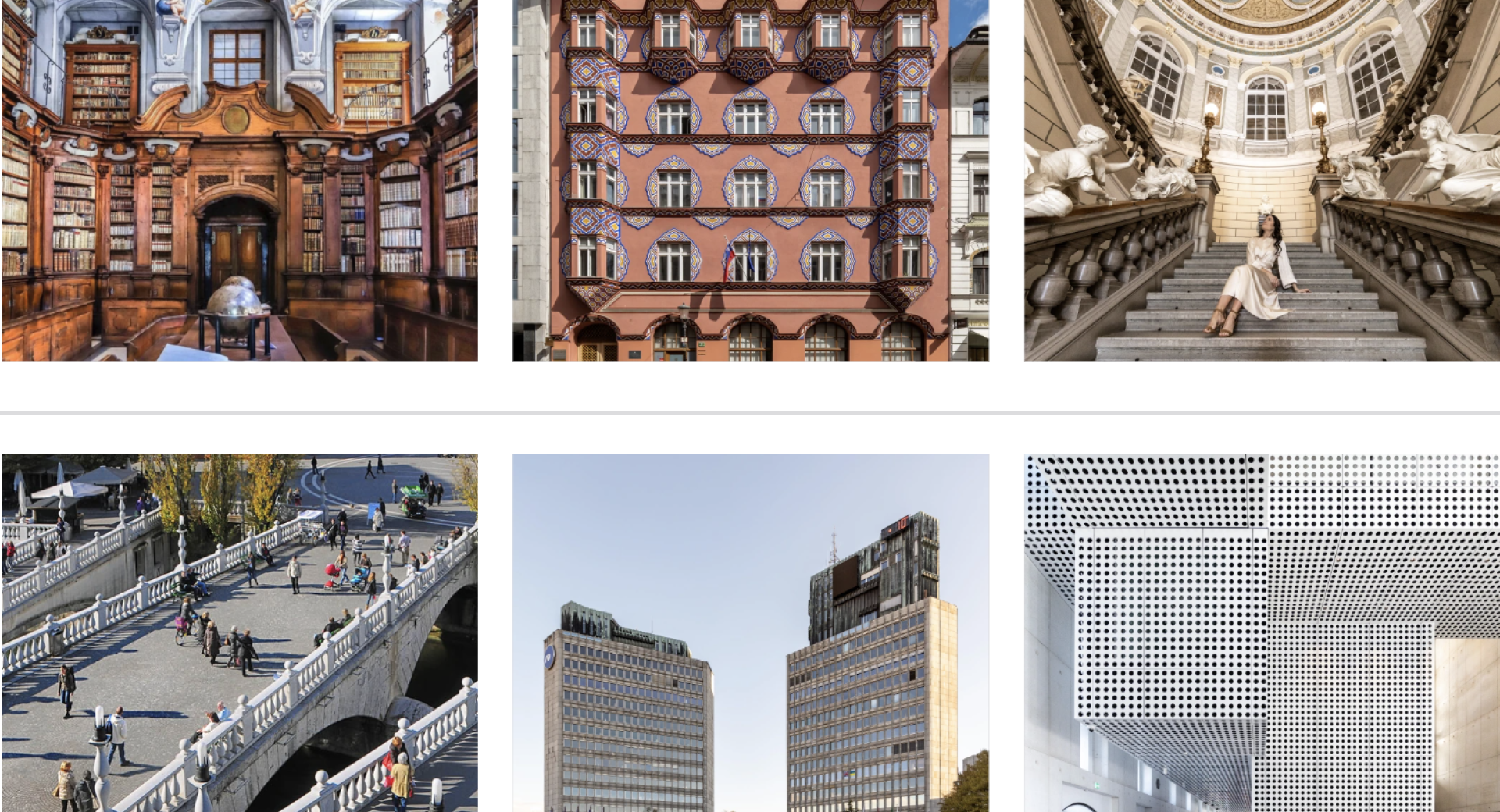
Earlier this year, my friend and photographer Philipp Heer and I, explored Ljubljana for the first time. We were positively surprised by the vast number of green areas, elaborate bridges and lively atmosphere. We arrived on a Friday. Our trip, however, didn’t begin with a building visit as usual, it began with dinner. So, we set up in motion by savouring the capital’s essence: Slovenian dumplings.
Philipp and I travel for architecture. We spend months researching a city; scouting buildings, tracking the most obscure and secret locations, and scrutinising angles to capture these structures in their full splendour. But we are always dazed when we are in person.
Ljubljana is a city that has many layers. Its beginnings as a Roman city are still visible (a wall, the world’s oldest wooden wheel and the roads in and out of the city to name a few). Its contemporary vestiges might have aged, but their meaning hasn’t – think of the Republic Square or Brutalist petrol stations. It’s when we visit in person that we are able to truly feel these places and understand these layers.
Some people can cover Ljubljana in a weekend, but we thought it of impossible. This is our attempt to share our architectural visits, with the hope of returning and discovering yet another layer of this beautiful city in the future.
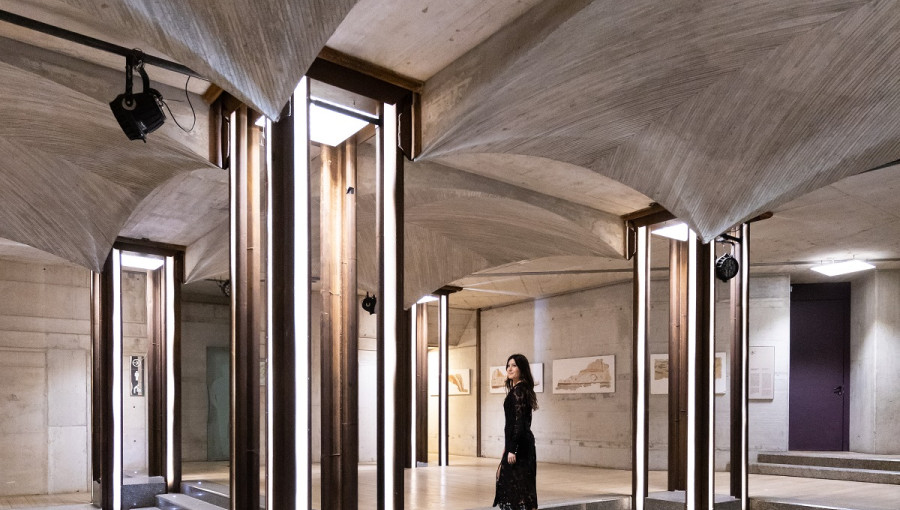
1. Ljubljana Castle
Ljubljana’s most symbolic point of reference is the Castle. Perched on a hill above the city for about 900 years, Ljubljana’s Castle defended the empire against the Ottoman invasion as well as peasant revolts. In the 17th and 18th centuries, the castle became an arsenal and a military hospital. It was damaged during the Napoleonic period and – once back in the Austrian Empire – became a prison, which it remained until 1905, resuming that function during World War II. Most recently, renovation efforts have brought back to life forgotten areas such as the lapidary (see photo above), a space for showcasing well-preserved, undamaged, buried inner structures of the rampart as well as the archaeological remains of the castle’s earlier stages. Read more here.
Architect: Ambient
Location: Grajska planota, 1000 Ljubljana (Google)
Year: 2009 (Lapidary KLMT and mini theatre)
________________________________________
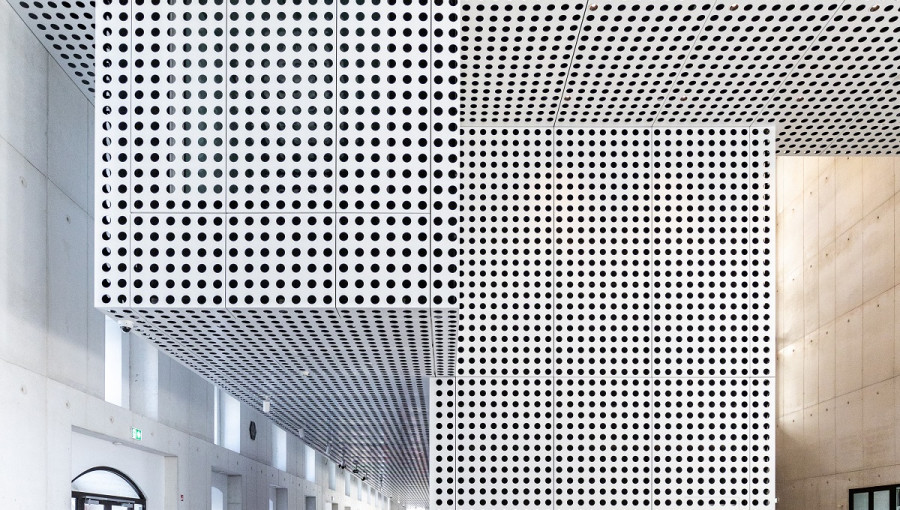
2. Cukrarna
Lording it by the languorous Ljubljanica river, Cukrarna – a former sugar refinery – stands proud. Its renovation is one of the most successful building conversions of the last ten years. Ljubljana, full of abandoned and semi ruined architecture, is advocating for transformation, not demolition, a difficult task nowadays. In late 2018, the Municipality of Ljubljana began, with financial support of the Slovenian Government and European Regional Developmental Fund, and in cooperation with the Museums and Galleries of Ljubljana, the first real renovation of the building. The essence of the project is the creation of a space dedicated to contemporary art and culture on the national and international level. The result was a success. Read more here.
Architect: Scapelab
Location: Poljanski nasip 40, 1000 Ljubljana (Google)
Year: 1934/2021
________________________________________
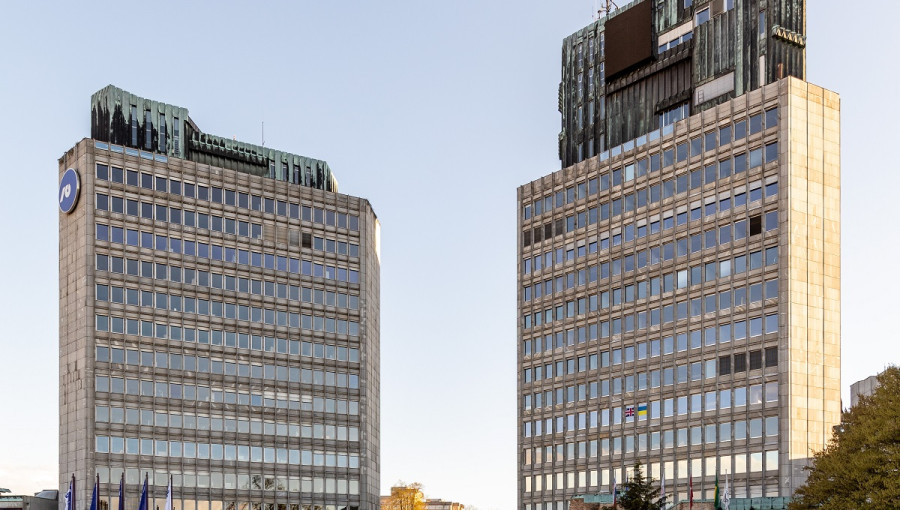
3. Republic Square
Republic Square was the result of a competition that was intended to create an appropriate site in which to erect the Monument to the Revolution. Architect Edvard Ravnikar, a student of architect Jože Plečnik in the years 1938-39, won the open-call competition. He wanted to introduce a new dimension and a new social place to the nation’s capital. The resulting design has its roots in the country’s history, marked with public buildings and places where important events have taken place. Republic Square, –which was originally called Revolution Square and renamed after Slovenia became independent in June 1991 – is the largest square in Ljubljana. Read more here.
Architect: Edvard Ravnikar
Location: Trg republike, 1000 Ljubljana (Google)
Year: 1960-1983
________________________________________
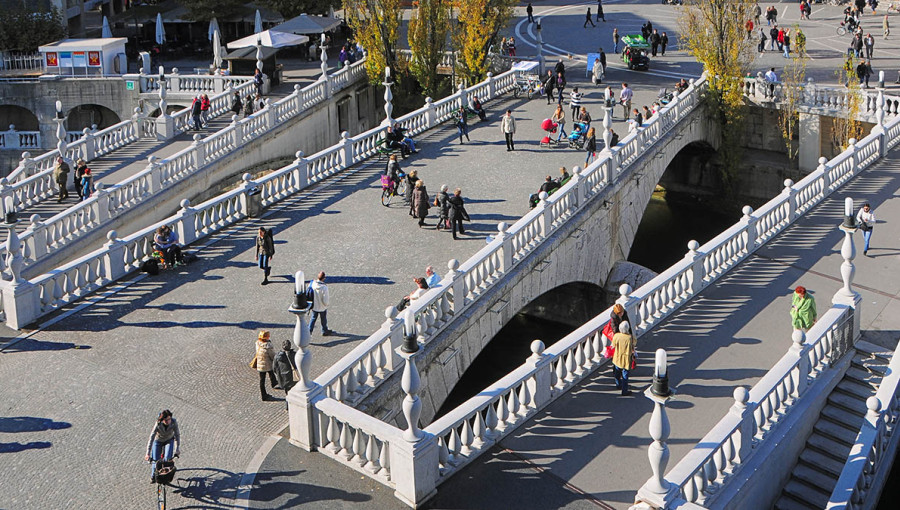
4. Triple Bridge
Ljubljana is replete with gorgeous bridges, but few are as charming as Tromostovje, the Triple Bridge. The central of the three bridges forming the Triple Bridge has stood in its place since 1842, when it replaced an old, strategically important medieval wooden bridge connecting the north-western European lands with south-eastern Europe and the Balkans. Between 1929 and 1932, the side bridges, intended for pedestrians, were added to the original stone bridge to a design by the architect Jože Plečnik. Nowadays, all three bridges are fully pedestrian. It has a key position on the crossing of Plečnik’s two urban axes, the river axis and the axis running between the Rožnik and castle hills. Read more here.
Architect: Jože Plečnik
Location: Adamič-Lundrovo nabrežje 1, 1000 Ljubljana (Google)
Year: 1932
________________________________________
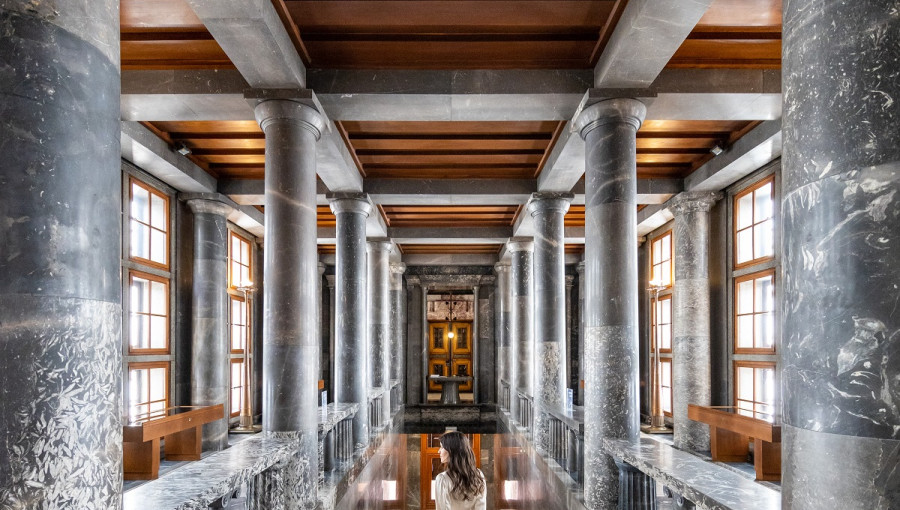
5. National and University Library of Slovenia (NUK)
Amongst the cobbled streets around the university area of Ljubljana, you’ll find the imposing walls of the National and University Library of Slovenia: A gem of a building bequeathed to the city by Jože Plečnik. It was modelled in the manner of the Italian palazzo, similar to the house of the Italian architect Federico Zuccari. The interior comprises four wings and the central hallway. Light comes to the main entrance through windows in the main reading room, which is at the top of the main staircase, oriented crosswise. This symbolises the central thought of the building’s architecture, ‘From the twilight of ignorance to the light of knowledge and enlightenment’. The staircase and its 32 columns are built of the dark Podpeč marble, which is actually limestone. Don’t miss the handles of the main door, they end with a little head of Pegasus. Read more here.
Architect: Jože Plečnik
Location: Turjaška ulica 1, 1000 Ljubljana (Google)
Year: 1941
________________________________________
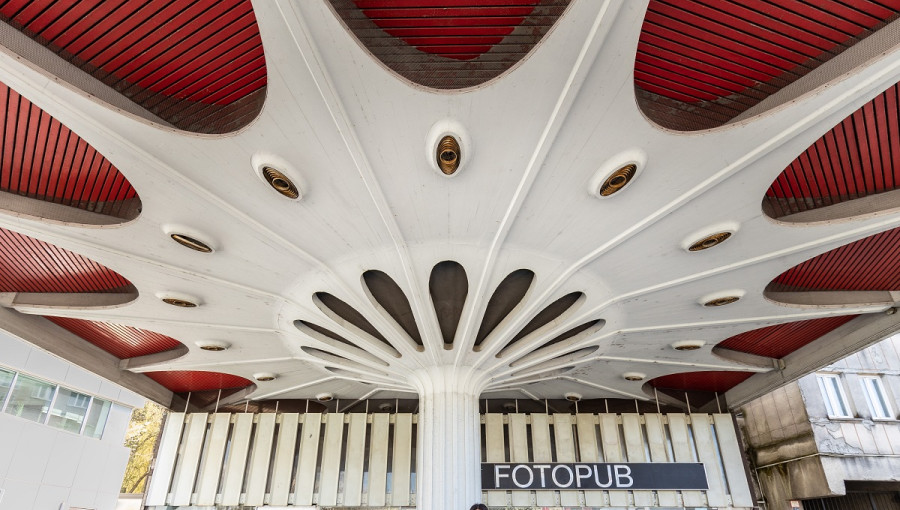
6. Petrol Stations
One of the surprising concrete structures that you’ll find across the capital are these unique petrol stations, they were built between 1950 and 1970 by Milan Mihelič. They typify a distinct time period of mid-century modernism in Yugoslavia. These petrol stations were of a pioneering design that combined the material sciences and engineering innovations occurring through the early 1950s and combined these advances with the modernist architectural aesthetics of a style of regional building design called “Slovene Structuralism”. Out of this combination came a series of mushroom-shaped concrete structures whose streamlined gravity-defying shapes inspired one to think to the future, while simultaneously ushering in some the very first ‘modern’ service stations in Slovenia. Read more here.
Architect: Milan Mihelič
Location: Tivolska cesta 46, 1000 Ljubljana (Google)
Year: 1970’s
________________________________________
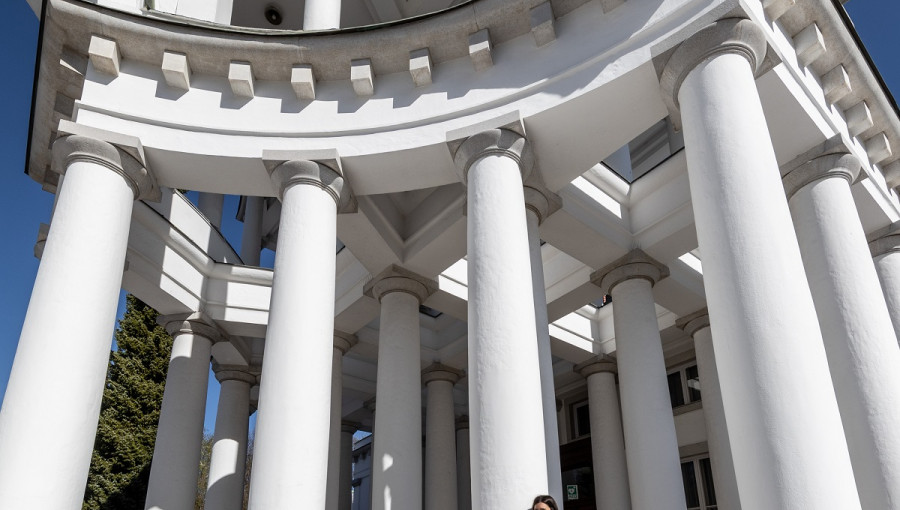
7. Žale Cemetery
The romantic Žale Cemetery is another of Plečnik’s designs. Originally commissioned in 1936 to architect Ivo Spinčič, Plečnik came to rescue after the plans failed to please the authorities. 1940 saw the completion of an unconventionally designed funeral home called Žale, which housed Ljubljana’s first chapels of rest and was quite unlike any other funeral home of the time. Its name subsequently became the name of the entire cemetery complex. The entrance to the Žale Cemetery is marked by a monumental arch with a two-storey colonnade (see photo above), which symbolically divides the world of the dead from the world of the living. Opposite the arch stands the cemetery’s main oratory, inspired by classical models. Chapels of rest are designed on a variety of different architectural models, from classical Greek to Byzantine and Oriental. Some are based on a combination of the three styles, some on pure imagination. In this way, Plečnik enhanced the concept of equality of all religions. Read more here.
Architect: Jože Plečnik
Location: Na Žalah 5, 1000 Ljubljana (Google)
Year: 1940
________________________________________
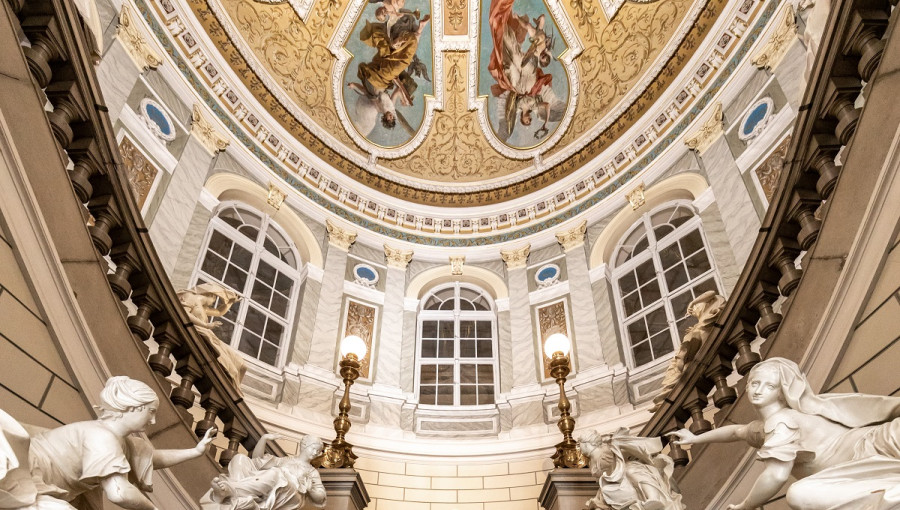
8. The National Museum of Slovenia
Along with the Slovenian Museum of Natural History, located in the same building, the National Museum of Slovenia is the country’s oldest scientific and cultural institution. The museum has an extensive collection of archaeological artefacts, old coins and banknotes and displays related to the applied arts. The main building of the National Museum – the true gem for the archie lover – was built in the Neo-Renaissance style by the master builder Wilhelm Treo in collaboration with Jan Vladimír Hráský between 1883 and 1885. Treo mostly followed the plans by the Viennese architect Wilhelm Rezori. The interior was designed by Hráský, with the ceiling of the main hall decorated with medaillons by the painters Janez and Jurij Šubic. Read more here.
Architect: Jan Vladimír Hráský
Location: Muzejska ulica 1, 1000 Ljubljana (Google)
Year: 1885
________________________________________
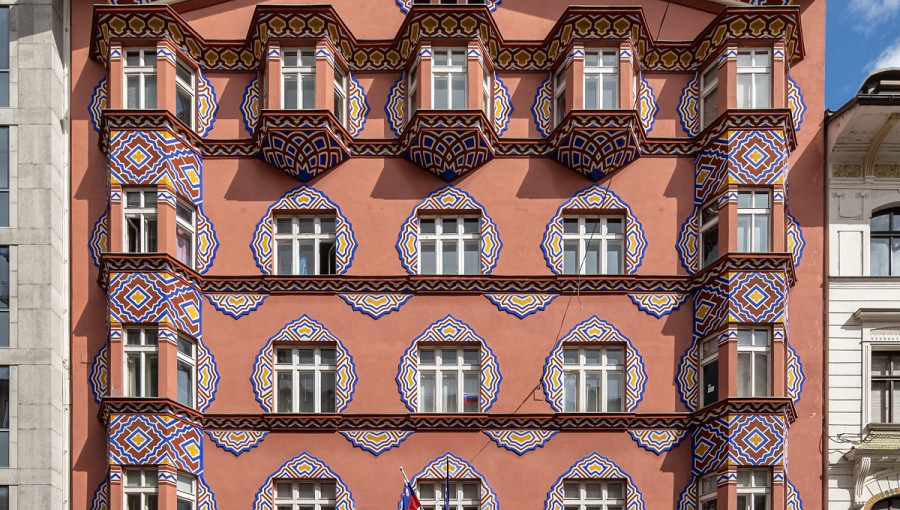
9. Vurnik house
The Cooperative Commercial Bank in the Miklošičeva street is one of Ljubljana’s landmark buildings. It was designed by architect Ivan Vurnik in 1921 and is considered as one of the finest examples of national style. The interior includes a Baroque painted hall with a glass ceiling, consisting of small blue glass squares, with a decorative strip of glass pieces of different colours. Stained glass windows depicting geometric patterns decorate also the staircase hall on the first two floors. The painted hall and façade is the work of the architects’ wife Helena Vurnik, a Viennese by birth, who was involved in her husband’s exploration and creation of typical Slovenian architecture. The geometric decoration is executed in red, white and blue, the colour combination of the Slovenian flag, featuring motifs from the wealth of Slovenian iconography: a stylised landscape of spruce forests, wheat fields and vines, and the motive of women in the Slovenian national costume. Read more here.
Architect: Ivan Vurnik
Location: Zadružna Gospodarska Banka, Miklošičeva cesta, 1000 Ljubljana (Google)
Year: 1921
________________________________________
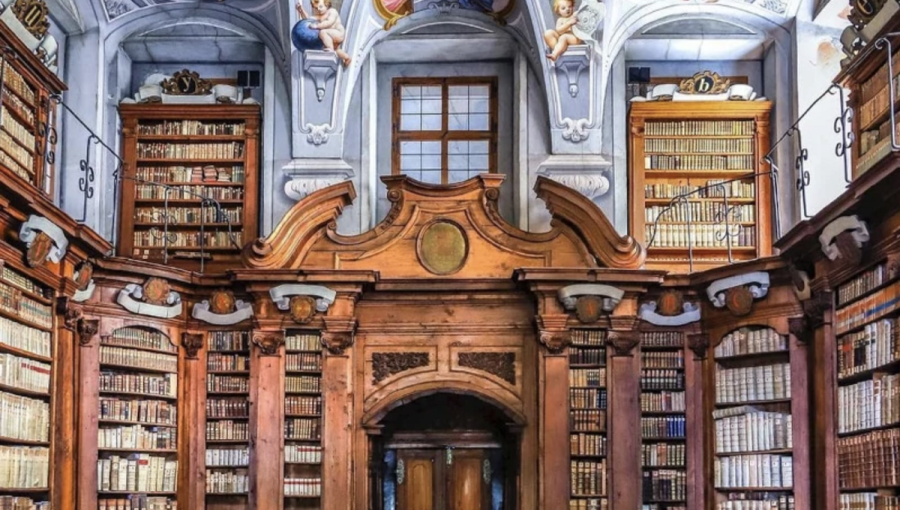
10. Semeniška knjižnica
The library in the Seminary Palace is the hidden pearl of the Baroque Ljubljana. You enter through the impressive entrance portal, made in 1714 in the Luka Mislej’s workshop, supported by the statues of Hercules, which are the work of the sculptor Angelo Putti. The two-storey library was founded in 1701 on the initiative of Academia Operosorum members and was the first public library in Ljubljana. The library was dedicated to the public for 50 years, and then it was left to the theologians. In 1721, Giulio Quaglio painted the ceiling of the library. Qualio’s painting represents the Allegory of Theology that gives power to Faith, next to it are Hope and Love. A massive reading table is adorned with three baroque globes. Read more here.
Architect: Giulio Quaglio
Location: Tržnica, Tržnica, Dolničarjeva ulica 4, 1000 Ljubljana (Google)
Year: 1721
________________________________________
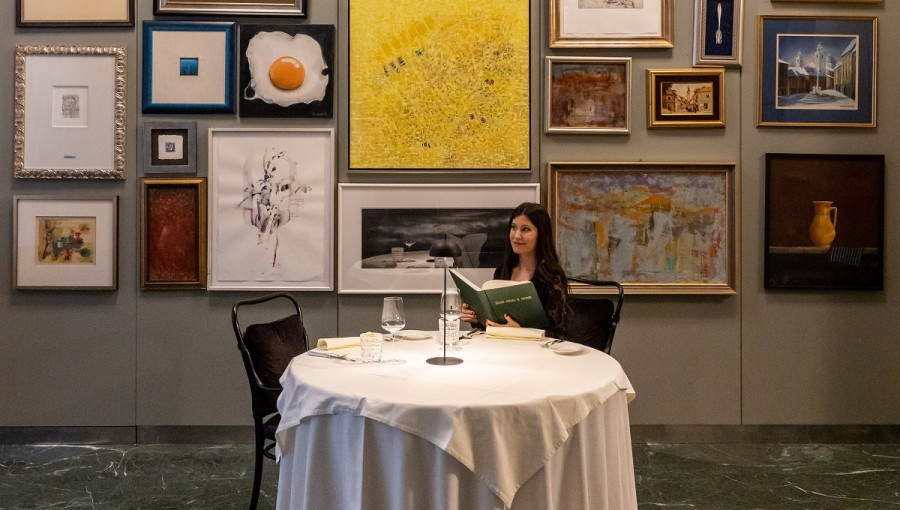
[BONUS] – JB Restaurant
Though strictly speaking this is more art than architecture, what’s better than eating in the most beautiful environment? Janez Bratovz is a chef renowned throughout Slovenia and further afield but his restaurant in the centre of Ljubljana not only offers a refined culinary experience, but also immaculately curated modern art. This sets the scene for the food, where experience, consistency and thorough local sourcing have been the key ingredients for more than a quarter of a century. The tasting menus are the ideal introduction to Slovenia’s cuisine and provenance. It’s one you don’t want to miss! Read more here.
Location: Miklošičeva cesta 19, 1000 Ljubljana (Google)
Year: 1992
________________________________________
Check these and other amazing locations on the map below or download The Free Architecture Guide of Ljubljana.


